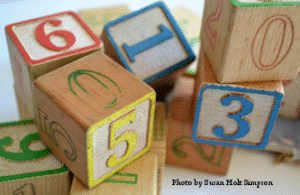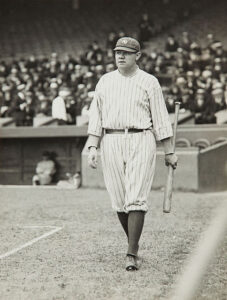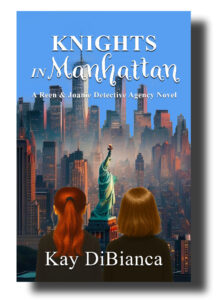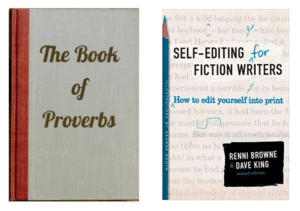When you’ve spent your entire career writing adult thrillers and true crime, switching to a children’s chapter book takes some getting used to. Jumping back and forth between the two is even more difficult. After struggling with both projects, I decided to stick with one till completion, then finish the other.
Because my chapter book is meticulously outlined and half-written, I chose to concentrate on that project first. Plus, a chapter book’s optimal range is 10,000 words — a fraction of the word-count of an environmental thriller.
When I read the opening sequence of my chapter book, it seemed too advanced for young readers. I needed to stop, home in on my target age group, and relax the language and pacing. After all, early readers don’t have the same mental acuity as adults. They need easier wins.
Children’s books are separated into three categories, all with different guidelines for word choices, pacing, viewpoints, and the amount and style of illustrations.
- Picture books
- Chapter books
- Middle Grade
Picture Books
A standard picture book is 32 pages long.
Picture books follow a compact story arc with a beginning, middle, and end. Jump into the action quickly, introduce a problem, and have the main character solve it by the end. The “rule of three,” where a problem recurs three times before a solution is found, is a common and effective technique. Illustrations will convey much of the emotion and setting, so your text should focus on the action and dialogue. Avoid using words to describe what the illustrations show. A picture book is meant to be read aloud, so the language needs to have a natural rhythm and flow.
Ages 3-5: Around 500 words, these stories have simple language and relatable topics like starting school, picky eaters, or a nighttime routine. Illustrations consume the pages—big, bright, and fun.
Ages 4-8: These picture books can be slightly longer, up to 800 words, with a slightly more complex plot. Still, you’re limited, because the illustrations take center stage.
As a visual medium, the writer must consider how the story will unfold across two-page spreads.
Chapter Books
To write a chapter book, you need to develop relatable characters, create a simple yet engaging plot, and break the story into short, purposeful chapters that build a new reader’s confidence. A typical chapter book is aimed at the 7-10 year age group and has a word count between 5,000 and 15,000 words. The sweet spot is 10,000. This allows the writer more freedom than a picture book.
Chapter books fall between early readers and middle-grade novels. The target audience is a new independent reader who’s often supervised by an adult. A solid, unique story idea is the foundation of a successful chapter book—especially since many are written as a series—that includes the main plot and core theme(s).
If you include an ill-advised subplot, be careful not to divert focus from the main plot. The young reader is just beginning to get comfortable reading on their own. Making the story easy to understand and follow is essential. Sure, many chapter books are read aloud to an adult, but don’t rely on that. What if the child is reading alone?
A chapter book must have a full narrative arc. If you watch a plethora of animated films, you’ll see they’re all structured like an adult novel or movie. And so, that’s exactly what I did. The story should be action-packed with lots of dialogue to hold a new independent reader’s attention, but never leave the main character and sidekick in trouble for long. A flip of the page is more than enough suspense.
Around 48-80 pages, chapter books often include black-and-white illustrations at the beginning of each chapter or where you want to show the new reader what’s going on. For example, when I introduce a new animal character, I’ll include an illustration to cement that picture in the reader’s mind. Because the illustration is in black-and-white, I need only mention color rather than a detailed description.
Middle Grade Novel
Most middle grade novels are geared toward ages 8-12. They are the in-between books for readers who have outgrown chapter books and are too young to emotionally handle or enjoy themes and ideas found in young adult novels. Middle grade novels run about 30,000-55,000 words.
Young readers need to relate to the characters, but they don’t mind “reading up.” Meaning, the main cast should be in the upper range of the target age group. For some reason, 13 and 14 year-old characters are considered a no-no. They’re too old for middle grade novels (perhaps due to puberty?) and too young to star in YA.
If you choose to write in this genre, you may want to read this article about middle grade novels. In it, the author includes an important distinction:
“What may work for an 8-year-old likely won’t work for a 12-year-old. So although we bundle it all into middle grade, the genre actually has two sub groups. This is important to understand in order to know your audience when writing, and thus appropriately adjust your themes and word count.
Two Sub-Categories
- Lower Middle Grade
Lower middle grade novels tend to be read by kids aged 8 to 10 years old. There may be a sub plot or two, but the main plot will dominate the focus, and all themes will certainly be G or PG rated.
- Upper Middle Grade
Upper middle grade novels can have a higher word count, and will be read by children aged 10 to 13 years old. There will likely be a subplot or two that help to carry the story in a substantial way. Themes may be a bit more complex, or PG or PG-13 rated.”
Even though I spent quite a bit of time researching techniques for my new target audience, I enjoy the challenge of writing a children’s chapter book. It’s rewarding, fun, and exciting.
Have you ever considered writing for children? Do you write children’s books now? If so, for what age group? Any tips to share? Categorize your favorite children’s book and tell us why you loved it as a child.












 By Elaine Viets
By Elaine Viets





 Today’s guest post is by my good pal, three-time Agatha award winner
Today’s guest post is by my good pal, three-time Agatha award winner 










 I stumbled across the subject of The Backwards Law by accident—a happy accident that led me to The Subtle Art of Not Giving a F*ck. Excellent book that I devoured in two sittings.
I stumbled across the subject of The Backwards Law by accident—a happy accident that led me to The Subtle Art of Not Giving a F*ck. Excellent book that I devoured in two sittings.